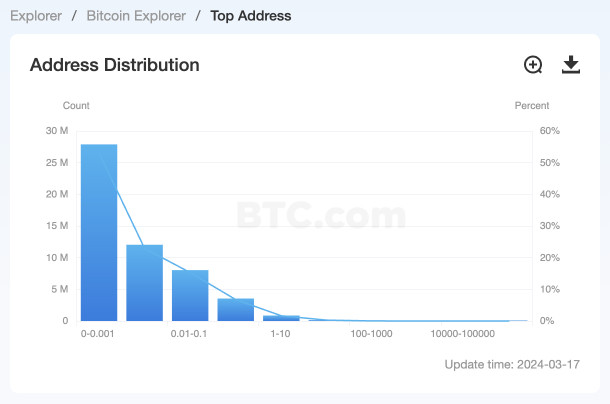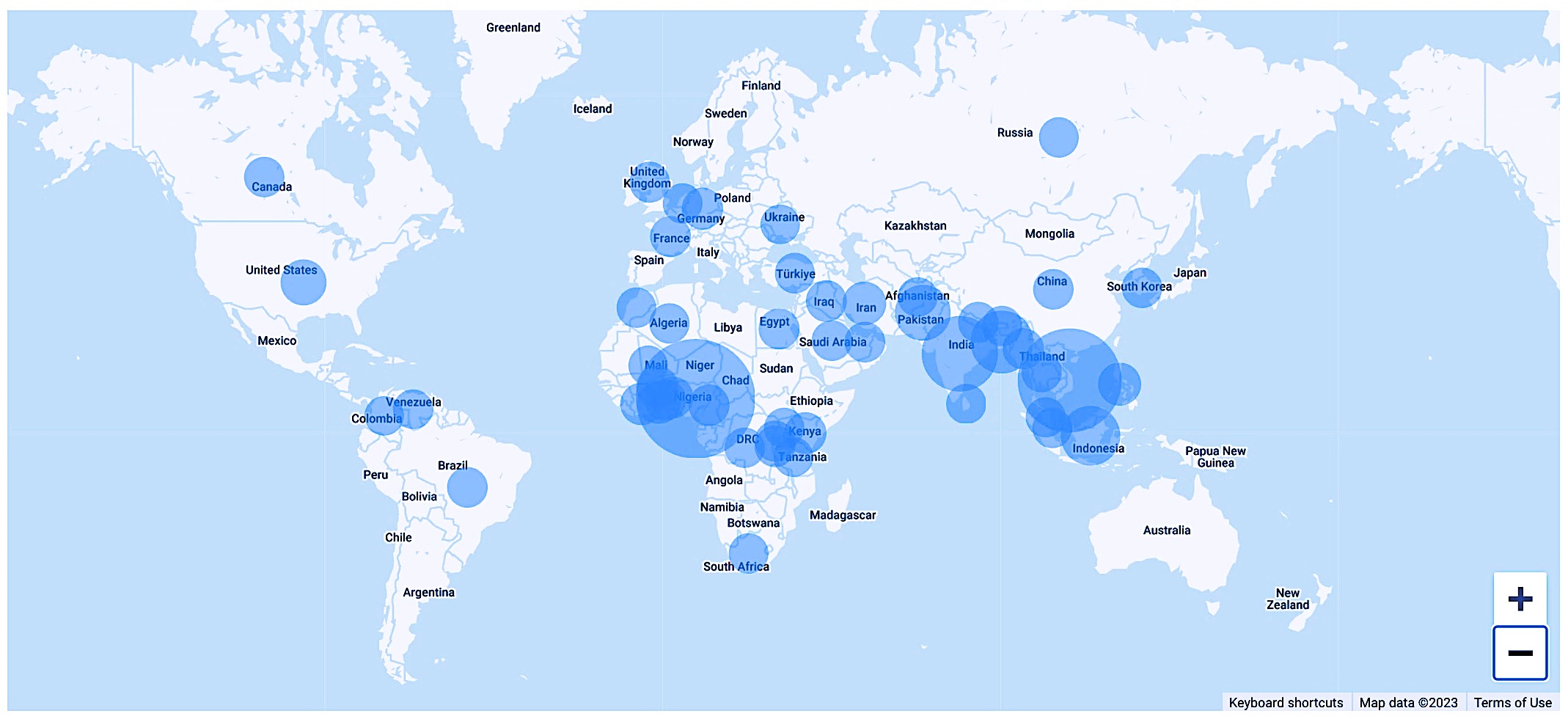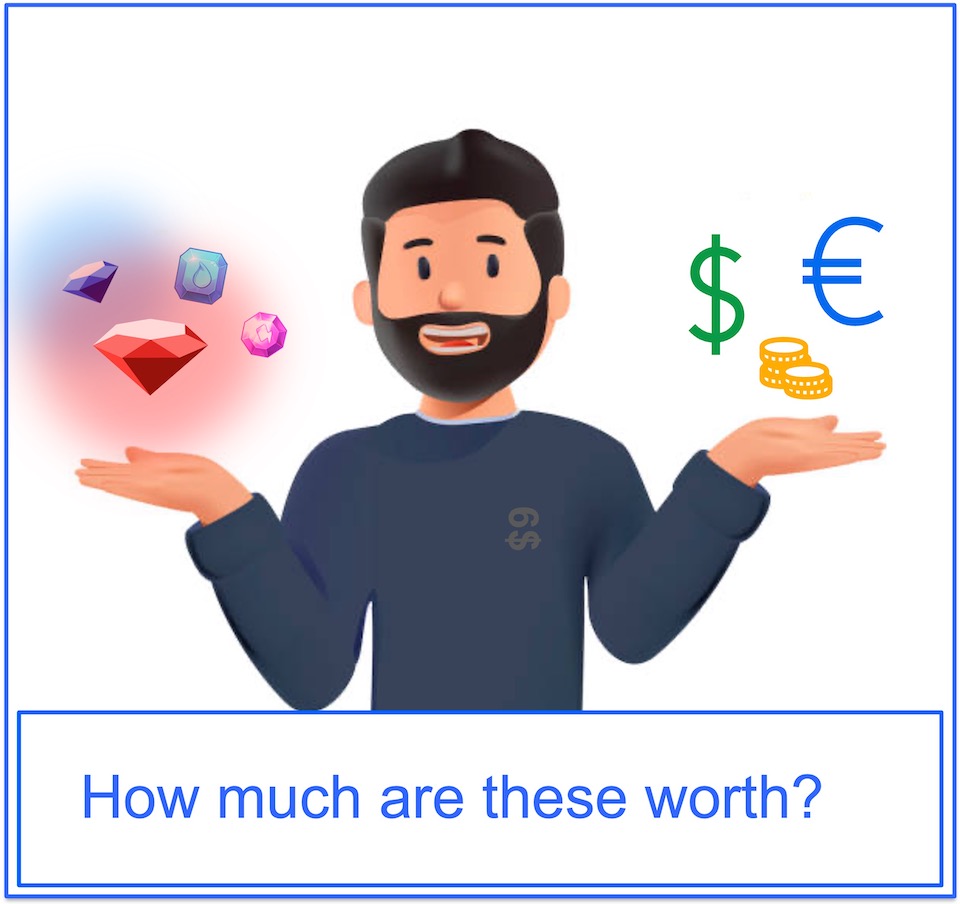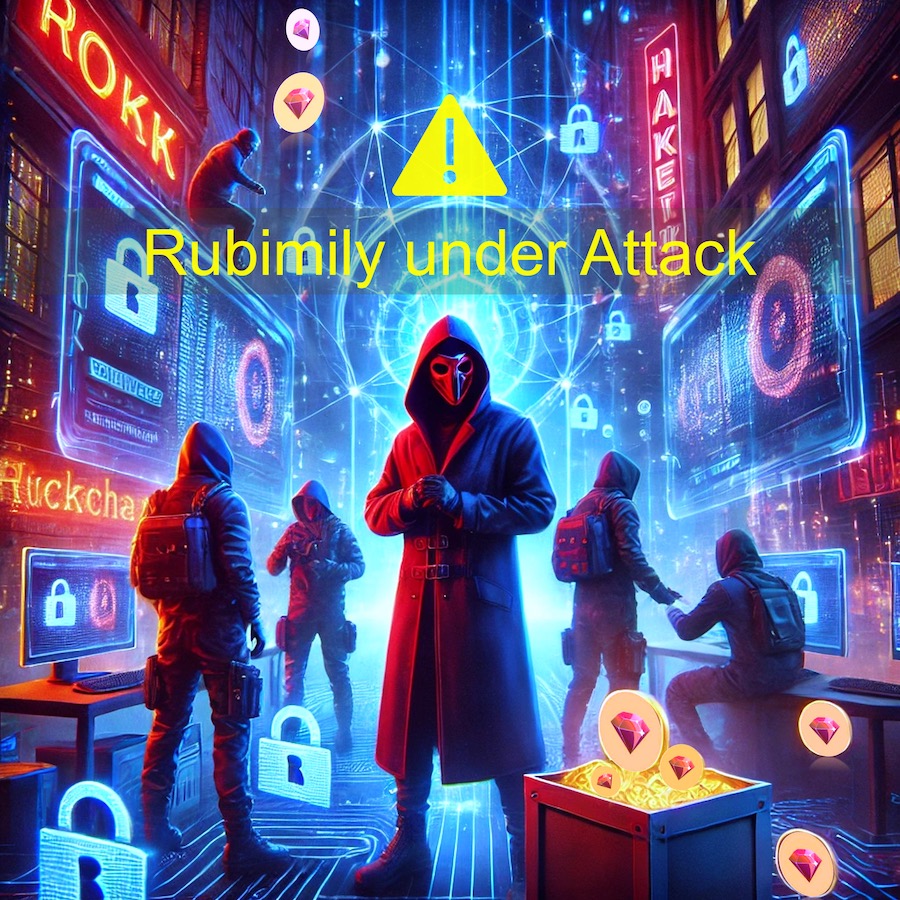⚡️ ASSESSING YOUR ASSET POSITION
Hello there! Rubimily fellow miners! How to determine your asset in any situation! Let's take a moment to slow down and focus on enjoying this article containing both knowledge and important secrets.
❛❛ This is not just a quality and important article for you! It's something most founders never want to tell you. Because it will reveal a blunt truth that allows you to clearly understand your position in each project. It also simultaneously points out another blunt truth about the gap between your position and that of the founders.
Let's explore some shocking things that no one has ever disclosed to you, in a single article. ❛❛
Out there are hundreds of thousands of Crypto projects with various indicators, and you may be involved in dozens or even hundreds of them, but have you ever wondered "How to determine the relative value between them?" or "How to determine your value within them" and "How to estimate the value of an asset of a project even when it is not listed?"
If you don't have a relatively reliable way to determine and compare the value between them, you may allow yourself to participate in a disastrous exchange or be deceived.
For example, if you can't distinguish the value of 1 BTC from 1 SHIB, you risk exchanging your bitcoin for a Shiba from someone else. especially in situations of swapping unlisted assets!
So the big issue you really need to care about right when you start holding any asset is to answer the question "How much is my asset worth?". It's always a confusing challenge for you, and if you don't have a consistent and reliable method to distinguish, you may make irreparable mistakes. For example, when faced with investment choices, you choose to store Onecoin (a Ponzi scheme project) instead of Bitcoin (a legendary digital currency project).
If the above hinted issues are important to you, if you are looking for a reliable method to limit risks, then this article is exactly for you. Let's start learning about your asset position!
DETERMINING PROJECT POSITION.
Asset position is an important concept that allows you to evaluate the various assets you hold, such as BTC, XRP, or SHIB. Let's understand this before considering the significance of the quantity of each asset you hold relative to the whole within a project.
Before continuing with this content! I would like to note: although the knowledge you are acquiring leads to clarifying the value of the Rubi you own, in this article, I use information from other familiar projects to illustrate. Because these figures can be verified, they are suitable for the purpose of clarification and making the content easier to understand for readers.
Therefore, the selected types of assets are readily available on Coinmarketcap, such as Bitcoin or Shiba Inu, ... you can totally verify the accuracy of the figures in the article by accessing additional external sources.
Okay! So, to understand the position, let's start by asking and answering some interesting questions as follows!
? ❛❛ Is there any difference between 1 unit of Bitcoin and 1 unit of Shiba Inu? What truly stands behind their prices? ❛❛
? ❛❛ Both Shiba Inu and Bitcoin are based on blockchain technology, so is there any chance for their prices to be equal? ❛❛
? ❛❛ Can Shiba Inu potentially rise to $1000 / Shib in the future? and what are the conditions needed for that to happen? ❛❛
These questions may initially seem a bit silly, but they are exactly the questions commonly asked. Because no one has ever wanted to provide you with a convincing answer, it makes you still lost in the foolish thinking that "Just own 1000 Shiba Inu and wait for the day it rises to $1000 per SHIB, and you become a millionaire."
Clearly, many people are facing similar issues, so let's answer once and for all for all those similar questions, and then you can also apply the same way to find out the true value with any type of digital asset.
OK, let's get started!
BITCOIN & SHIBA INU
In this section, let's try to examine and compare the characteristics of two types of assets, Bitcoin and Shiba Inu, regarding how they are generated and distributed in the market, thereby clarifying their positions.
Supply Generation Method:
• Bitcoin: Bitcoin is generated through the network rewarding miners for each block, with a total of 21 million BTC to be generated over 140 years of mining, starting from January 3, 2009.
• Shiba_Inu: Created on an August afternoon in 2020, with a total supply of ~1 quadrillion SHIB generated at once on the Ethereum network's smart contract.
Distribution Method:
• Bitcoin: Distributed 100% to miners through block rewards, with each Bitcoin block taking about 10 minutes to complete, and a fixed amount of BTC randomly distributed to miners. (at the time of writing, Bitcoin's block reward is 6.25 BTC / block)
• Shiba_Inu: Owned entirely by the development team, they can distribute it however they want. So far, SHIB has mainly been rewarded for liquidity provision activities, given away for free to KOLs, and sold to early investors.
Maximum & Circulating Supply:
• Bitcoin: 21,000,000 BTC (current circulating supply ~19.66 million)
• Shiba_Inu: 999,982,365,709,437 SHIB (current circulating supply ~598.29 trillion)
Ownership Concentration Status:
• Bitcoin (decentralized): Ownership is entirely decentralized with a rule of random rewards for miners, meaning even Bitcoin's creator cannot decide block rewards for anyone, not even for themselves. This creates a fair and unified mechanism across the network.
• Shiba_Inu: (centralized): At its inception, all 1 quadrillion SHIB belonged to the development team, and they subsequently decided to sell, give away, and reward it to individual users who provided liquidity for Shiba.
Number of Wallets:
• Bitcoin: approximately 52,528,871 wallets according to data from btc.com
• Shiba_Inu: approximately 1,383,959 wallets according to data from the Ethereum explorer
Market Capitalization:
• BTC - Cap: $1,417,621,049,145 (one trillion four hundred seventeen billion six hundred twenty-one million forty-nine thousand one hundred forty-five US dollars)
• SHIB - Cap: $16,049,707,027 (sixteen billion forty-nine million seven hundred seven thousand twenty-seven US dollars)
Replacement Potential:
• Bitcoin: Very difficult to replace, as Bitcoin is a complex blockchain requiring massive hardware infrastructure and huge operating costs. It has also undergone decades of mining operation and remains the top-valued digital asset. In a market with tens of thousands of Crypto types, Bitcoin's value alone accounts for 52% of the total market value.
• Shiba_Inu: As a meme token created on a Smart Contract in August 2020, since then, hundreds of thousands of different tokens have been created similarly. That means there is always the possibility that one day people will be more interested in the image of a turkey than a Shiba dog.
Conclusion on the Comparison of Asset Positions:
• Bitcoin is the original unit of a bitcoin blockchain, with a scarce supply of only 21 million units, mined over 140 years, and 100% distributed in a decentralized manner to miners.
• Shiba_Inu is a token created in one day from a contract with a supply of up to 1 quadrillion SHIB, and all Shib created belongs to the entity that created the contract.
Based on the significant differences above, it can be seen that there is impossible for the value of 1 SHIB to equal 1 BTC.
Continuing to answer the question "can SHIB reach $1000?"
Currently, the price of SHIB is $0.000025 with a huge supply of 590 trillion SHIB. So, to rise to $1, the total market capitalization of SHIB must reach 590 trillion dollars, which is a figure 420 times Bitcoin's market capitalization and nearly 6 times the total global GDP (Global GDP in 2023 is only about $107 trillion).
SHIB is just a meme token among hundreds of thousands of Meme Tokens created by a few individuals, with its labor value, resources, or economic value being very small. Therefore, the scenario of SHIB alone having a market cap nearly 6 times the world's economy is impossible to happen in this universe.
Also, based on the above reasoning, if you own 1000 SHIB with the belief that one day it will reach $1000 / SHIB, to turn yourself into a millionaire, then even its market capitalization must be 6000 times the global economy. This fundamentally flawed thinking is a serious mistake.
CALCULATING YOUR OWNERSHIP POSITION IN A PROJECT.
In this section, let's delve deeper into each project to understand an important metric and a way for you to always ascertain the position and value of the assets you own in any network by comparing your absolute position with the circulating supply and the total circulating value cap.
Here, we introduce a specific measurement concept, which allows you to gauge your position in each network, called the "Mpoint Rule" Mpoint is calculated by dividing the total circulating supply of a particular asset by one million, and the result of this division is termed as the value of one Mpoint of that asset.
Since projects differ in terms of how many units of assets they issue or circulate, for instance, Project A may have a circulating supply of 21 million tokens while Project B has 1 trillion tokens in circulation, such inconsistency makes it impossible to directly compare the value of 1 Token A with 1 Token B. Without applying the Mpoint rule, it will be very difficult to evaluate the correlation between two different types of assets, especially when they are not listed.
Therefore, the proposed Mpoint rule allows you to break down the circulating supply of any asset into one million parts, each referred to as one Mpoint. This enables you to compare different projects' Mpoint objectively and accurately.
An Mpoint equates to one-millionth of the circulating supply, serving as a balanced figure for determining your fundamental position within a network. It is even suitable for evaluating your position in all developing and popular projects.
Once you have your Mpoint result, you can compare it with the number of assets you own. If the number of assets you own exceeds the Mpoint, it signifies that you hold a higher position than the basic position in the network. The larger the gap between your asset holdings and the Mpoint, the higher or lower your position in the network.
For example, let's consider Bitcoin - with a current circulating supply of 19.6 million BTC, you would calculate 1 Mpoint (BTC) = 19.6 BTC. Thus, if you own approximately 19.6 BTC, you undoubtedly hold a significant holder position within the Bitcoin network.

(The number of wallets > 10 BTC only about ≈ 0.29%)
Similarly, applying the Mpoint calculation to various networks and projects yields the following data:
• Ethereum with a circulating supply ≈ 120 million: Mpoint (ETH) ≈ 120 ETH
• Binance coin, circulating at around 149.5 million: Mpoint (BNB) ≈ 149.5 BNB
• Shiba Inu token, circulating at about 589.53 trillion: Mpoint (SHIB) ≈ 589,534,086 SHIB
• Pi coin, with a potential circulating supply of around 98 billion: Mpoint (Pi) = 98,000 Pi
• Bitcoin, circulating at approximately 19.62 million: Mpoint (BTC) = 19.62 BTC
• Rubi Block, with a circulating supply of around 1.62 million: Mpoint (RBL) = 1.62 RBL
If your asset is not listed above, applying a similar Mpoint calculation will determine your ownership position within any network, helping evaluate your influence and importance.
For instance, if you own 1 Bitcoin, your Mpoint-based position would be 1/19.6 = 0.051 Mpoint (BTC). Conversely, in comparison with Shiba Inu, if you own 1000 SHIB, your position would be 1000 / 589,534,086 = 0.0000017 Mpoint (SHIB). Thus, you can discern that, in terms of network position, owning just 1 BTC places you in a more biger position compared to owning 1000 SHIB in their respective networks.
Why is this comparison important? Because it provides you with a relative understanding of how your accumulation or acquisition will position you based on the quantity you will accumulate. Investing the same resource but having a reliable method to assess your position can potentially lead to breakthroughs in the future value of your assets.
ESTIMATING ASSET VALUE WITH Mpoint.
Returning to the question at the beginning of the article, "How do you calculate the value of your assets in a project even when it is not listed?"
As mentioned earlier, the higher your Mpoint index, the larger your position, so let's use your Mpoint index to estimate your asset value step by step as follows:
3 steps to estimate the value of an unlisted asset
Step 1: Determine your Mpoint using the simple method as above.
Step 2: Assume a suitable Cap Value for the network you are planning to compare to estimate a reasonable value for the entire network.
Step 3: Calculate your asset value with formular: take (Value Cap) / 1 million, then multiply by your Mpoint.
Example of applying 3 steps! I will take a specific example by trying to estimate the assets I mined on the Pi-Network. I assume this is a common concern among other miners as well.
As you know!, Pi network is a famous mobile mining network, Pi earners feel confused in reliably valuing their assets, but they are lost in the endless Many ways to price. Some people believe that 1 pi is only a few dollars, but others believe that it is worth about 300 thousand dollars.
So let's try applying the MPoint position method to make a proper value estimate for assets with the Pi network.
I will start with the assumption that "I have 400 Pi coins in my mainnet wallet and can be tranfer, so how much are my 400 pi coins really worth?"
Step 1: Determine my Mpoint position:
As we know, Pi is a mainnet network with a circulating supply of tradable Mainnet of 100 billion Pi coins, with approximately 2 billion Pi locked, so the remaining freely circulating supply is assumed to be 98 billion (rounded figure). So I will calculate my Mpoint = 400 / (98,000,000,000 / 1,000,000) = 0.00408 Mpoint.
Step 2: Estimate the Cap Value of the PI network:
Since the Pi network has not yet been listed, you can make any reasonable assumption about the value of this network based on your expectations.
Considering all social factors, user volume, openness, technology, ecosystem, and network concentration, I am optimistic that the Pi network could reach a top 5 valuation, equivalent to the value of the Binance Smart Chain network.
(Please note: This is just my personal opinion to illustrate the calculation method, you can estimate a different Cap value that you deem reasonable for the Pi network).
Based on the Value Cap of BNB, which is $80 billion at the time of writing, I assume that the value of the Pi network also reaches $80 billion.
Step 3: Calculate the asset value:
Your asset value = ($80,000,000,000 / 1,000,000) * 0.00408 = $326.4
So in the assumption scenario above, I own 400 Pi coins, and I have estimated the value of the assets I own to be $326.4.
Attention: This Mpoint method is only suitable for calculating tranferable circulating supplies between wallets, including supplies held by developers, as long as they are in a transferable state, they will be within the calculation scope.
APPLYING MPOINT AND TRY CALCULATING WITH RUBI
Finally, apply this Mpoint calculation method to estimate the value of your current assets! Try evaluating Rubi's Cap Value according to your appropriate estimate, apply the formula, and calculate!
To make it easier for you to estimate RUBI Value Cap - here are some useful data.

( RUBI world wide distributed - by Google insight )
• Rubi Network is a private network Blockchain, mined and distributed 100% to miners.
• The mining network has spread over 190 countries with 600,000 miners.
• Rubi Network has undergone 675 mining days and currently has a circulating supply of approximately 1.62 million units.
To suggest! Bitcoin 1400 billion dollars, and Pi assumes an estimate of 80 billion dollars, then how much will you value Rubi?
After you apply the value estimate, I hope the number will satisfy you. Regardless of the figure you calculate, it's just a number for today, I believe that number will continue to grow in the future.
Be one of the first 50 commenters tell about your result, and include your wallet address to receive your gift!
NOW I START MINING RUBI - IS IT TOO LATE?
❛❛ Rubi has been mined for nearly 2 years, with over 600 miners. Is it too late to start now? ❛❛
Hello! I can answer right away that "if you're just learning about RUBI now, it's still EARLY, very EARLY."
Please join me in proving the above statement convincingly.
● Rubi started mining on 04/30/2022 until the time of this article on 3/14/2024, almost 2 years, but it's still early, as early as when you started mining Bitcoin in December 2010, you could still easily earn Bitcoin with a personal computer.
● Theoretical data shows that Rubi has only mined a total of 61.5 million RBL, but in reality, only 5.3 million RBL has been verified and only 1.62 million RBL has been added to the circulating supply. This is a very small number, estimating that only about 3% of Rubi has been mined.
● User data shows that Rubi has only about 620,000 miners despite being spread across 190 countries, and this is certainly still a modest number. Research data from us shows that there are currently about 200 million miners worldwide participating in digital asset mining, and the numbers are still increasing.
● And the final evidence is a shocking result when considering the mining position through the Mpoint index.
We will use Mpoint to indicate how early the current mining position is. Try estimating the number of RBL you mine in 1 month across networks, and compare it with Mpoint.
Let's look at the mining positions of 2 other major networks, Bitcoin and Pi-coin, and then compare them with Rubi.
Bitcoin: The Mpoint index of bitcoin is 1 Mpoint = 19.6 BTC - Currently, the mining competition of the bitcoin network is very high, and as a newcomer, you can hardly mine Bitcoin at the current time and if you want mining bitcoins with a PC, is impossible with the Bitcoin network.
Pi-coin: The Mpoint index of Pi-coin is 1 Mpoint = 98000 Pi (review Mpoint (Pi)) - Currently, you can still mine Pi-coin for free, but the basic mining efficiency for beginners is only 0.0073 Pi/h. If you mine actively for 30 days, you only achieve 5.2 pi - equivalent to ≈ 0.000053 Mpoint (Pi).
RUBI: Meanwhile, with the Rubi network, at the time of writing, there is 1 Mpoint = 1.62 RBL , and the basic mining efficiency for newcomers = 1.25 RBL/day. If you mine actively for 30 days, you can earn up to a maximum of 41.25 RBL, equivalent to ≈ 25 Mpoint (RBL).
So when using Mpoint to calculate the mining position, you can see the mining efficiency accurately when comparing between networks. Specifically, the Mpoint index indicates that the mining efficiency of Rubi compared to the Pi network is: 25 / 0.000053 = 47196 (times).
❛❛ 47000 times efficiency! This result is truly surprising for the writer himself, however, let's think about it. Pi has a circulating supply of ≈ 98,000,000,000 Pi, so if you mine 5 units in 1 month, it has a very small impact on the position. On the contrary, Rubi currently has 1,620,000 RBL in circulation, so if you can mine up to 41 RBL/month, it will have a very significant impact. ❛❛
❛❛ IT'S STILL VERY EARLY TO MINE RUBI
BUT THE RUBI HALVING EVENT IS ALSO APPROACHING ❛❛
Thanks for reading to the end
ANDY & RUBI
Come back KYC Article Series
⎕ • Related Content







Comments (126)
migs19xx
Help me verify andy
0 Trả lời Chia sẻ 22:42 20/09/2025
0 trả lời
fouad192
I want help kys
0 Trả lời Chia sẻ 02:01 26/06/2024
0 trả lời
meerimran
Hi
0 Trả lời Chia sẻ 11:25 13/06/2024
0 trả lời
abdulmalikhassan
How i secret my wallet i lose
0 Trả lời Chia sẻ 17:51 12/06/2024
0 trả lời
macbegin1
Now that i have passed my kyc, how do i move my asset to mainnet
0 Trả lời Chia sẻ 23:28 27/05/2024
0 trả lời